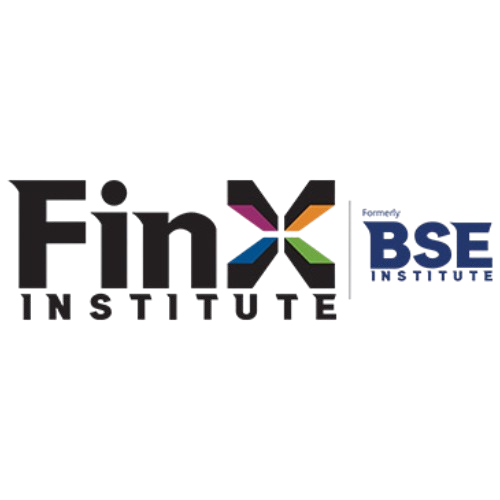Money laundering is a complex and pervasive issue that poses significant risks to our global economy. Criminals have become increasingly sophisticated in their methods, making it crucial for individuals and organizations to stay ahead in the fight against this illicit practice. In this blog, we will delve into the depths of money laundering, its history, impact, prevention techniques, and why pursuing a Certificate Program on Anti-Money Laundering is essential in today’s world.
Definition of Money Laundering
It is the process of making illegally obtained money appear to come from legitimate sources. It’s a practice that criminals use to disguise the origins of their illicit gains, making it challenging for authorities to trace and prosecute them. This definition encapsulates the core of what it is all about – a cloak and dagger operation with far-reaching consequences.
History and Evolution of Money Laundering
It is not a new phenomenon. Its roots can be traced back to ancient civilizations where people sought to disguise the origins of their wealth. However, it gained prominence in the modern world during the Prohibition era in the United States when gangsters turned to money laundering to legitimize their bootlegging profits.
Over the years, the methods and scale of money laundering have evolved dramatically. With the advent of the digital age, criminals now have access to an array of sophisticated tools and techniques to launder money, making it a global challenge that demands a proactive response.
Common Methods of Money Laundering
Money launderers employ various methods to obscure the origins of their funds. Some common techniques include:
1. Shell Companies: Creating fake companies to funnel illicit funds through legitimate-seeming entities.
2. Smurfing: Breaking down large sums of money into smaller transactions to avoid suspicion.
3. Trade-Based Laundering: Manipulating the pricing and quantities of goods in international trade to move money across borders.
4. Cryptocurrencies: Utilizing digital currencies to hide transactions and assets.
Legal and Ethical Implications
Money laundering is not just a criminal activity; it has significant legal and ethical ramifications. It undermines the integrity of financial systems and contributes to economic instability. Legal consequences can range from hefty fines to lengthy prison sentences, depending on the jurisdiction and the severity of the crime.
Additionally, money laundering is ethically reprehensible as it often supports criminal enterprises, including human trafficking, drug cartels, and terrorism.
Impact on the Global Economy
The consequences of money laundering are far-reaching and extend to the global economy. According to a report, the estimated amount of money laundered globally in one year is 2-5% of global GDP, or $800 billion to $2 trillion. This staggering figure not only distorts markets and competition but also leads to increased corruption and a weakened rule of law in many countries.
Furthermore, it can hinder foreign direct investment, as investors are wary of pouring money into economies tainted by illicit funds. This, in turn, affects job creation and economic growth.
Prevention and Detection Techniques
Preventing and detecting it is a top priority for governments, financial institutions, and businesses. Some effective techniques include:
1. Customer Due Diligence: Verifying the identities of customers and scrutinizing their financial activities.
2. Transaction Monitoring: Continuously monitoring transactions for suspicious activities.
3. Know Your Customer (KYC) Regulations: Implementing KYC protocols to verify the identity of clients.
4. Anti-Money Laundering (AML) Programs: Developing AML programs to ensure compliance with regulations and train employees to detect and report suspicious activities.
5. International Cooperation: Collaboration between countries and organizations to share information and intelligence on money laundering activities.
Course Overview
The BSE Institute offers a comprehensive Certificate Program on Anti-Money Laundering, designed to equip students with the knowledge and skills needed to combat money laundering effectively. This program covers:
- In-depth understanding of money laundering.
- Current legal and ethical implications.
- Terrorist Financing Risks
- AML Policy and CDD
- Suspicious Transactions
- Guidance on international AML standards and regulations.
It is essential for individuals seeking a career in finance, law enforcement, or compliance, as well as professionals already in these fields, to enhance their knowledge and skills in the fight against money laundering. Pursuing the Certificate Program on Anti-Money Laundering from BSE Institute is a significant step toward this goal.
Why Choose the Certificate Program on Anti-Money Laundering?
1. Expert Faculty: The program is led by experienced instructors with vast expertise in the field.
2. Networking Opportunities: Students have the chance to connect with professionals in the industry, opening doors to career advancement.
3. Staying Updated: The program is regularly updated to reflect the latest developments in money laundering and AML regulations.
Conclusion
Money laundering is a threat that affects us all, and addressing it requires a collective effort from governments, organizations, and individuals. Understanding its definition, history, and evolution is the first step toward combating this issue. The legal and ethical implications are significant, and the impact on the global economy is undeniable.
Preventing and detecting money laundering is a complex task, but through education and awareness, we can make significant strides in curbing this menace. The Certificate Program on Anti-Money Laundering offered by BSE Institute is an excellent opportunity for individuals to equip themselves with the knowledge and skills needed to join the fight against money laundering. By choosing this program, individuals can contribute to a safer, more transparent financial world.


